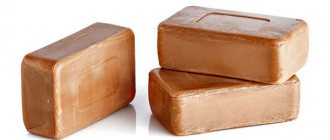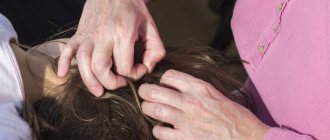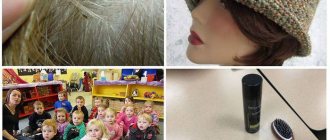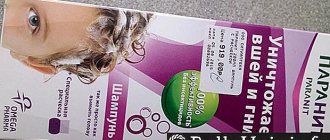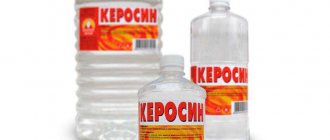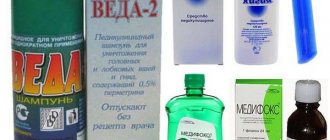In order to effectively fight parasitic insects, you need to know their weak points, namely, what bed bugs are afraid of. This information is needed primarily for prevention, and of course, in order to enhance the effect of standard insecticide treatment. Despite the fact that the chemical industry does not stand still and anti-bedbug products are being modernized every time, there is a whole list of substances and conditions in which bedbugs become unbearable to live. We will talk about what bedbugs are afraid of in an apartment.
What are bedbugs afraid of?
Temperature conditions
Bedbugs are insects that react extremely negatively to sudden changes in temperature, as well as too high or, conversely, too low temperatures. Why do bed bugs love to live near warm-blooded people? There are two explanations for this: first, humans are the bedbug’s only source of food, second, people are accustomed to living at a temperature of 20 to 30 degrees, which is ideal for the life and reproduction of blood-sucking parasites. If you have the opportunity to reduce the temperature to below 20 or above 30, you can be calm, they will not be able to reproduce under such conditions. And if the room temperature is below 20 degrees, then it becomes uncomfortable for bedbugs to simply exist here, forcing the insects to migrate to a more comfortable place for them. It is worth saying that the temperature regime cannot be the main method of combating bedbugs, since these parasites are able to adapt to many conditions.
Unfortunately, for people who are faced with the problem of bedbugs, there is evidence that in distant Tajikistan, in a gorge, a population of parasites was found that were able to adapt to local climatic conditions, the temperature in such places is not higher than 14 degrees.
Thus, in order to influence a bug using temperature, you need to create a temperature in an apartment or house for a long time below 12 degrees, or better yet, frost conditions, or above 35. Therefore, when answering the question, are bedbugs afraid of cold and heat, the answer will be positive, they react negatively to changes in temperature conditions.
Herbs against bedbugs
Chamomile pyrethrum is used to combat bedbugs.
Herbs with a pronounced aroma can serve as an effective preventative and eliminate a small number of blood-sucking insects.
- Chamomile contains a poison - pyrethrin, which has a fatal effect on insects, but is absolutely harmless to humans. Freshly picked chamomile flowers are used for destruction. They are ground to a loose state and scattered under mattresses, in pillowcases, along baseboards and in other places where bedbugs live. An effective remedy is obtained by adding naphthalene to chamomile.
- Celandine has a pungent odor that repels insects. To kill bedbugs, an infusion of grass is used, which should then be used to treat the room. The collection of celandine for preparing the infusion is carried out from May to July in dry weather. To prepare the product you will need 1.5 cups of crushed celandine, 1/4 of a piece of laundry or tar soap and 10 liters of water. The herb must be placed in a container, filled with water and left to infuse for 2 weeks, then strain, add coarsely grated soap and treat the apartment or house.
- Ledum is a poisonous plant with a pronounced aroma. Due to its properties of negatively affecting insects, wild rosemary is popularly nicknamed bedbug. To destroy ectoparasites that feed on human blood, plant leaves collected from August to October are used. It is at this time that they contain the most essential oils. Ledum against bedbugs can be used as a powder, which is valid for 3 months. You can also remove insects using fumigation, which is carried out by setting fire to dry crushed wild rosemary leaves indoors.
- Valerian is not used as a means of extermination, but rather as a means of attracting bedbugs, thanks to which the insects crawl out of their shelters and can be easily destroyed physically. This herb can only be used in the absence of pets.
Illumination
There is evidence that bed bugs are afraid of light or sudden changes in lighting, which is why they bite at night. To be precise, insects are most active from 2 am to 6 am. If you turn on the lights sharply at night, they will scatter in search of a dark place.
Unfortunately, this feature of parasites cannot be applied in practice, since they create nests in secluded places, such as the area behind the baseboard, under the mattress, under the wallpaper, and so on. Accordingly, turning on the light abruptly will not affect their life in any way.
Methods of application
Tar soap for lice can be used as a standalone preparation for treating insects, or in combination with medications. Laundry soap is also used to get rid of parasites, and tar shampoos have appeared on the modern cosmetics market.
Important : we should not forget that this option allows you to remove lice, but the nits will remain in the hair and will have to be selected manually. Even a fine comb will not remove all the larvae, which usually cling closer to the root.
Tar soap for lice
The first option with soap alone is more suitable for those people who prefer natural remedies, but the procedure will have to be repeated daily for a week.
Sequencing:
- Wash your hair with your usual product to remove sebum from your hair. If necessary, do this twice and rinse thoroughly.
- Do not dry your hair, and if it is long, wring it out. Lather with tar soap (shampoo), lather it well and distribute evenly over the entire surface.
- Put on a rubber swimming cap or a plastic bag and tie it with a terry towel - this will allow you to retain natural heat from your body.
- After an hour, free your head and rinse your hair with warm water. Dry but do not blow dry. Then comb them with a special fine-tooth comb, which can be purchased at any pharmacy.
Analogue in the form of shampoo
It is possible to add oils to tar shampoo - unrefined sunflower or essential oils, and they will improve the effect. The first will moisturize the skin and make it easier to comb your hair after washing, and the second will add a pleasant aroma and you won’t have to use conditioners.
The sequence and method of using shampoo is identical to the actions with tar soap; there is no point in repeating it. But for those who need quick relief, this remedy is combined with medications of any name.
Sequence of actions:
- Apply anti-pediculosis medication to the head or pubis.
- The instructions for use indicate the time required for the procedure. After it expires, rinse off the composition with warm water.
- Rub your hair with tar shampoo or soap, put a rubber cap or plastic bag over it, and tie it with a terry towel to keep warm.
- After 30 minutes, rinse off the foam and rinse your hair. Wipe them, but keep them damp.
- Comb out nits with a special fine-toothed comb - you can buy it at the pharmacy.
Important : if you start using medications, the time the foam stays on your head will be reduced from an hour to 30 minutes! Don't forget this.
Laundry soap
Using 72% soap against lice also leads to good results. It neutralizes parasites with alkalis contained in the composition. The procedure is carried out every day for a week. In this case, alkalis dry the skin in the same way as after tar soap, so you should not overexpose the foam on your hair to increase the effect.
Instructions for use:
- Wash your hair with the laundry soap you will use for treatment to remove sebum from your hair. If necessary, do this again and rinse thoroughly with warm water.
- Now lather your hair with anti-lice laundry soap, rubbing it into the hair roots and creating as much foam as possible. Pull on a rubber cap or plastic bag, tying a terry towel around the top to keep warm.
- After an hour, rinse the foam thoroughly with warm water, but do not dry your hair with a hairdryer, just pat it dry with a towel.
- Comb out parasites with a special thick comb over a spread sheet or newspaper.
Important : using a hair dryer is not recommended for two reasons. Firstly, it is more difficult to comb insects out of dry hair than from wet hair. Secondly, laundry, tar soap and shampoo dry the skin with alkalis; this effect should not be enhanced by hot air.
Aroma of wormwood and tansy
The folk method of getting rid of bedbugs using wormwood can compete with professional pest control. Since it is considered gentle for humans and pets, the method can also be used independently, without the involvement of strangers. You can either buy a plant at the market or in a pharmacy, or pick it yourself in places where it is allowed, having first studied its appearance in the photo. But you must understand that, despite the fact that wormwood has a repellent aroma for bloodsuckers, the effect of the herb is not long-term. After just two or three days, when the smell is not so strong, bed bugs may attack your home again.
What folk methods exist?
Folk methods can be roughly divided into 2 groups: relatively harmless and more dangerous. The first include ancient methods based on the use of gifts of nature (plants that bedbugs do not particularly like). The second includes compositions based on chemical compounds, which, according to their original purpose, are not related to bedbugs, but have a detrimental effect on the latter.
And if the first group of folk methods, although practically safe, is less effective, then the second, on the contrary, is more harmful, but more effective.
Fighting bedbugs with plants
Not all aromas that are so pleasant to humans are also liked by bedbugs. Moreover, the smells of some plants are so disgusting for bloodsuckers that they are ready to run away just to avoid smelling this “amber.”
The herbs are dried and laid out in places where insects gather, dry bunches are hung around the home, decoctions are prepared for spraying or cleaning rooms, and the boiling decoction is poured into bedbug nests and secluded corners where parasites can live.
If it is not possible to collect the necessary plants to remove bedbugs, you can use essential oils with appropriate odors for the same purpose. Oils are used to lubricate insect habitats, and the house is sprayed with solutions of ethers and water. For greater effect, you can mix several oils with unbearable odors for bedbugs.
The following plants can be used as repellents:
- Tansy. This is a poisonous plant, and it is also unsafe for people. But if you spread dry bunches around the house, bed bugs will not tolerate such proximity and will leave. In order not to harm yourself, you can use tansy only in well-ventilated areas and away from children.
- Sagebrush. The smells of this plant are more suitable for prevention. Wormwood tincture can be mixed with water and wipe furniture and floors with this solution when cleaning. If you use wormwood as a means to kill bedbugs, then the insects, of course, will go away, but it is not a fact that they will go away forever.
- Chamomile. Of the plants, this is perhaps the most effective option. Certain varieties of chamomile (for example, Dalmatian) initially contain pyrethrum, which is deadly for bedbugs and some other insects. The dried plant can be crushed and scattered around the home, or you can prepare (buy) an alcohol solution of chamomile to treat the apartment 2 times a week.
- Air. The plant can be purchased in powder form at a pharmacy. Bedbugs are very afraid of its smell, so you can use calamus both for scattering around the apartment and for preparing tinctures and decoctions.
- Rosemary. Its subtle herbal smell is frankly disgusting to bedbugs, and these insects are almost physically unable to coexist with rosemary. Dry twigs, essential oils or prepared sprays are used.
- Lavender. It is not without reason that this plant is included in many repellents against insects, including bedbugs, for which it is literally unbearable. Lavender is dried, decoctions are prepared with it, or essential oil is used.
Additionally, vanillin in combination with soda 1:5 can be used against bedbugs. This smell causes noticeable discomfort to insects, but does not bother people.
Fish oil is quite suitable for lubricating cracks and places where parasites accumulate, if it is known for sure that the “guests” came from neighbors.
These methods are really good for fighting bedbugs, but provided that there are not many insects, and the smells of repellent herbs or products are in the apartment almost constantly . Otherwise, the effect will be short-lived or not at all.
More drastic ways
These are already more effective folk methods for bedbugs, but not as harmless as the previous ones. Here, to destroy parasites, chemical liquids are used that are used for various purposes in everyday life:
- Alcohols camphor, ethyl plus turpentine (5 g / 100 ml / 100 ml). This mixture can be used for spraying and wiping areas of accumulation.
- A solution of water, kerosene, turpentine and soap (10 ml / 15 ml / 100 ml / 30 g) is mixed well and used to lubricate insect habitats.
- Salicylic acid with turpentine and phenol (3 g / 40 ml / 20 ml) are mixed, and the resulting product is used to wipe accumulation areas and spray nests.
- Bleach (you can use Whiteness) has been known as a means of fighting bedbugs for a long time. The floors are washed with a solution of water, which has a detrimental effect on bed parasites. But if the solution turns out to be overly caustic, it is better to leave the house for a while to avoid an allergic reaction.
- Kerosene quickly provokes suffocation in insects by getting on their body, saturating it and seeping into the respiratory tract. In this case, the passages are blocked, air does not pass through, and the bedbugs die painfully.
- Boric acid is used mainly in dry form (in powder), since bloodsuckers will not eat it in the form of bait. After contact with the body of the parasite, the acid begins to poison it, corroding the chitinous cover, entrails and completely drying out the insects.
- Laundry and tar soap. They are used separately, each of them, and they really do have an effect, although not for long. After cleaning the room with a solution of laundry soap (or tar) and water, the bugs will run away to the neighbors, because they cannot stand these specific odors. But there is no guarantee that the insects will not return again after some time. However, both of these soaps are recommended to be used when washing bed linen if bedbugs have infested the bed (this helps prevent insects from settling there).
- Vinegar. Concentrated acetic acid is used to wipe door frames and bedbug habitats. The pungent smell repels bloodsuckers, and contact with acetic acid can be fatal.
- Ammonia is diluted in water and the floor is washed with this solution. Sometimes containers filled with ammonia are placed near the accumulation areas.
- Copper sulfate is used mainly for spraying the room (for this purpose the powder is diluted in water). For prevention, the same drug is mixed with wallpaper glue, which will become a long-term barrier to bedbugs from entering the house.
Which folk remedies for bedbugs to choose is up to everyone to decide for themselves. But you should also remember the significant disadvantages of such recipes. For example, if turpentine accidentally gets on clothing, it will be impossible to wash it off, and phenol, if inhaled while preparing the mixture, can cause severe poisoning. One way or another, it’s clearly not worth suffering with bedbugs due to quite harmful substances and compounds, even for the sake of destroying these bloodsuckers.
Thus, not every folk remedy is a guarantee of getting rid of bed parasites, and not every one is safe. With most folk recipes you need to be extremely careful. As for the effect, it exists, since these methods are still in use. The only question is whether the result is always noticeable and for how long.
Perfume aroma
It has long been known that bed bugs react negatively to perfume scents. In medieval European castles, in order to get rid of bedbugs and ensure a restful sleep, noble nobles took baths with the addition of perfume compositions before going to bed, then they sprayed themselves with perfume so that they would not be attacked by bedbugs at night.
This fact has been confirmed in our time; indeed, bed bugs react extremely negatively to perfumes, colognes and eau de toilettes, regardless of their price and components. Moreover, the more pronounced the aroma, the more repellent it is to domestic parasites.
But, as in the situation with light, bedbugs are able to adapt to foreign odors over time and after a week continue to bite people living in the apartment.
Reviews about home removal of cockroaches
Valentina Titova, 57 years old, Krasnoyarsk. I’ve lived in an apartment all my life, and my neighbors are also unclean, so I often struggle with cockroaches. For me personally, the best option is boric acid with boiled yolk. I recommend it to everyone, it really helps.
Sergey Vasiliev, 24 years old, Rostov-on-Don. We rented an apartment, and there were a bunch of cockroaches there. I bought an aerosol, I had to spray it a couple of times, but everyone quickly died. And most importantly, it was convenient, I just had to leave the house for 3 hours and then ventilate the apartment.
There are many ways to combat cockroaches. Folk remedies are available - they are the safest for humans, store-bought remedies in the form of aerosols, powders, traps, etc., and you can also call a specialist at home if you can’t cope on your own.
Chemical smell
Products from the chemical industry are probably the only products that can really act on bedbugs for a long time and effectively. The most unpleasant substance for a home blood-sucking parasite is ammonia. Its smell has a sobering effect on humans, but for a bug it is real poison. Having smelled a pungent aroma, the insect goes as far as possible to a place where the smell cannot be heard. Often a bucket of water is placed indoors, into which a few drops of ammonia are added, and this serves as an excellent way to prevent re-infection with bedbugs. The disadvantages of this method are obvious, since being in a room with an ammonia smell is extremely uncomfortable for a person.
There are a number of odors that have repellent properties and are unpleasant for parasites, these include:
- The smell of tar soap
- Denatured alcohol
- Apple cider vinegar
- Acetone
- Turpentine
- Kerosene
- bleach
Of course, none of the above smells can kill a bug, but they can still scare them away. Often these aromas are components. But repellents and aerosols for bedbugs, but act as an aid. On their own, even in large quantities, vinegar, acetone or even turpentine cannot kill a bug, even if the insect is completely dipped into the solution. But if you place small drops of these substances near a bedbug nest, you can be sure that there will be no bedbugs there in the near future. Are bedbugs afraid of bleach - more likely no than yes, since there is not a single confirmed fact of killing bedbugs using this method
As in all the previous described methods, the method of getting rid of bedbugs using strong aromas is rather ineffective, since it is not capable of destroying the insect, but it can introduce an unpleasant odor into the apartment.
How to remove bedbugs
You have to decide for yourself how to remove bedbugs, but in order to actually “poison” them, you need to influence their entire life cycle, from eggs and larvae to adults; not all folk remedies for bedbugs are capable of such feats. You may have to use insecticides from the store, at least such as dichlorvos or Raptor, or even resort to the help of special services. Sometimes it's faster, safer and more efficient.
This is also interesting: Photos of house bugs: what do they look like?
Think about your neighbors - in the event of a massive attack, part of the colony may move to them, and your “guests” will simply go away for a while, and then return to their homes anyway. So it’s better to warn all the neighbors around and all together, at the same time, take action.
Products mistakenly considered harmful to bedbugs
In the process of many years of struggle with the parasitic plague, people resorted to more and more new ways of fighting, sometimes finding options that were mistakenly considered effective. These include the most popular methods that have no effect:
- Destruction of bedbugs using ultrasonic waves. However, recent studies have proven that ultrasound has no effect on parasites
- Cleaning a room with salt water and baking soda
- Fight against parasites using magnetic fields, but as in the case of ultrasound, the effect of this method is close to zero
- they are absolutely not afraid of dryness, the color of plants and vinegar vapors
Zest of tangerines and lemons
This method can be called a classic method in the fight against harmful household insects. The main disadvantage is that this product does not kill cockroaches, but only repels them. The lifespan of this “drug” is several days, but it is harmless and many people even like such a refreshing smell.
.
Citrus peels have long been used to control insects.
.
Comparison of tar and laundry soap
Tar soap against bedbugs is quite effective due to its composition. It contains a solution of birch tar (about 8%). Laundry soap is made from technical animal fats.
Product effectiveness
Experienced housewives can tell you whether a solution of tar or laundry soap helps in the fight against bedbugs.
The specific smell, as well as the presence of antiseptic properties, determines the use of both types of soap as a means to help get rid of bedbugs.
Soap is added to various mixtures designed to destroy blood-sucking parasites.
If there are bedbugs in a sleeping area (bed, sofa), it is advisable to treat bedding with the addition of both or one of these types of soap.
Pests react sharply to strong aromas, but they do not die from them. Bedbugs hear strong-smelling soap and perceive it as a source of threat, so they flee.
But this method is only effective for a short time, and then the parasites adapt. Soap does not affect laid bedbug eggs, even if it comes into direct contact with them.
Properties
Tar soap has the following properties:
- drying (ability to extract water);
- antibacterial;
- antimycotic;
- antiparasitic.
In soap used for household needs, technical fats have a sharp, repulsive odor that is inherent in the finished product for a long time. Moreover, cheap varieties of soap always have a more pronounced smell than their expensive counterparts.
Laundry soap also has well-pronounced slightly alkaline properties.
How does the product work?
Along with the strong smell, as well as other specific properties of tar, this soap effectively repels blood-sucking parasites.
Laundry soap against bedbugs is effective because it also smells bad to bedbugs, and it also has a pronounced alkaline reaction. Residues of alkali damage the integument of the insect, and the smell drives it away.
Video
Tar soap from scratch. Manufacturing process
Products with strong odors
The use of products with a strong odor can be considered effective. They use wormwood, tansy, essential oils of tea tree and cloves, as well as vinegar. Many people mistakenly believe that the smells of these plants kill bedbugs and vinegar also kills them, but this is not so. Due to strong odors, parasites, who are guided precisely by the smell and attracted by the blood of the victim, simply lose their orientation, that is, the strong aroma confuses them.
Wormwood can be dried, crushed into powder and poured into cracks, and tansy can be hung in bunches in the corners of the apartment. However, remember that tansy is toxic to pets and humans; it is not recommended to use it for a long time.
This is also interesting: Proven methods for removing bedbugs from houses and apartments
Essential oils of tea tree and cloves can be added to the water you use to wash the floor, and you can also add a few drops to the water in a spray bottle and spray the room. Furniture is usually sprayed with a vinegar solution.
Smells are effective at repelling bedbugs (for example, if neighbors are poisoning them - so that they don’t crawl towards you), but they will not help if bedbugs already live with you. They have no effect at all on insects in the larval stage and on eggs.
Traditional recipes using tar and laundry soap
When breeding a large number of blood-sucking insects, the following recipes are used against bedbugs:
- take laundry soap, kerosene and water (7:20:10). Combine all components, achieving homogeneity. Use the prepared product to thoroughly wipe all possible bedbug habitats. Personal belongings and kitchen utensils are pre-cleaned before processing.
- Use laundry and tar soap in equal proportions. Grind the bars on a fine grater. Mix them together. Lay the mixture under the sleeping places (sofa, bed), behind the interior items, along the slats covering the gap between the wall and the floor. The chips are left there for a long time.
- The finished mixture of shavings from both types of soap is dissolved in hot water. Allow the solution to cool. Soak a rag in it and then wipe all accessible surfaces with it. Spray the prepared solution into the folds of upholstered furniture elements.
- To the mixture of shavings from both types of soap add an equal amount of turpentine, as well as 5 parts of ammonia. Soak a rag in the resulting liquid and wipe all surfaces of the living space.
- Grind and then combine soap crumbs with gasoline. They do this with extreme caution. Make sure that an accidental spark does not cause a fire. The finished product is used to wipe the legs of beds, chairs and other lower parts of interior items.
Laundry soap
The composition of laundry soap is primarily fatty acids. If, for example, a bar of soap says “72,” that means it contains 72 percent fatty acids. It turns out that the higher the number, the better the cleaning ability. There are also alkalis in such soap, a pH value that regulates acidity.
What attracts you most about this type of soap:
- Thanks to alkalis, soap dissolves well in water.
- The production of such soap is a long process. Oil and fats are placed in a special container in the required proportions and cooked at high temperature for 10 days. Then an alkali solution is added to this mixture and allowed to brew for several days. After some more minor operations, the finished soap is poured into molds, where it remains for several days, hardening. In general, it takes from two weeks to a month to make laundry soap.
- Laundry soap is actively used by gardeners, spraying areas with cultivated plants with a soap solution. This helps get rid of various pests.
- The same procedures help indoor flowers.
- And if ants appear in the house, just put small pieces of laundry soap in several places, and the insects will disappear.
Bedbugs and soap
Insects are very sensitive to pungent odors; they, of course, do not kill them, but they can scare them away. This is why bedbugs react to laundry soap, trying to hide from the source of the threat. The problem is that this method “neutralizes” bloodsuckers only for a short time, then the insects adapt. Soap has no effect on bedbug eggs, even if it comes into direct contact with the parasites. Conclusion: laundry soap is ineffective for fighting bedbugs.
Bedbugs and laundry soap - preparing homemade poison
Remember, it is advisable to use soap only when the number of bedbugs in the house is minimal and the area of infestation is small.
- Anti-bunk mixture : rub 7 parts of dark soap (75%) and dissolve it in 20 parts of kerosene, add 10 parts of water. We carry out wet cleaning and apply the resulting mixture to all accessible surfaces. Such a solution should not come into contact with dishes and personal hygiene items.
- Tar and household soap for bedbugs : grate, grind into powder, add carbon disulfide. Mix the resulting paste with kerosene. We dilute the mixture with water 1:1, shake well and the solution can be used to treat the room. We repeat the procedure after 7-14 days, depending on the degree of infection at home.
We carry out prevention
If you find out that your neighbors have bedbugs, it would be a good idea to carry out preventive measures using laundry soap. Tar soap is also perfect for these purposes (it has an even stronger smell).
Grate it into coarse shavings and place it under beds, sofas, wardrobes, and under carpets. Prepare a strong solution and treat window sills, entrance door jambs, air ducts - places where bedbugs can penetrate.
Does laundry soap help against bedbugs?
The best solution is to call professional exterminators. Experts use powerful insecticides that leave no chance of survival for bedbugs, their larvae or eggs. In addition, such an event will help to completely clear the room of bloodsuckers in the shortest possible time.
Signs of bedbugs in your home
- If at times you smell the smell of low-quality cognac - so tart and sweet, then you know - this is exactly what “stinks of bedbugs”
- if sometimes you find small black dots in the cracks or corners of the wallpaper, these are bedbug excrement
- if you find a strange find while cleaning that looks like an empty bug - this is the chitinous shell of an insect
- If someone constantly bites you at night, but there are no mosquitoes in the house, these are bedbugs!
- if brown spots are found on the sheets, it’s a bug that bit you at night, and then you crushed it and smeared it on the sheets. Brrrrr!
Bedbugs can get into the house not only from neighbors, but also in many other ways:
- with luggage upon returning from travel,
- when buying furniture (try not to buy second-hand furniture, and if it’s an antique banquette from the era of Queen Victoria, inspect it for uninvited guests!),
- You can even bring a couple with you from your guests!
Therefore, no one is safe from these insects, and the fight against bedbugs turns into a real war, because they do not go away without resistance.
This is also interesting: How to get rid of bed bugs? The most effective way
You need to start fighting as soon as you notice them in your home. Not everyone likes to use chemicals, especially when there are animals or small children at home, so they begin to look for folk remedies for bedbugs at home.
